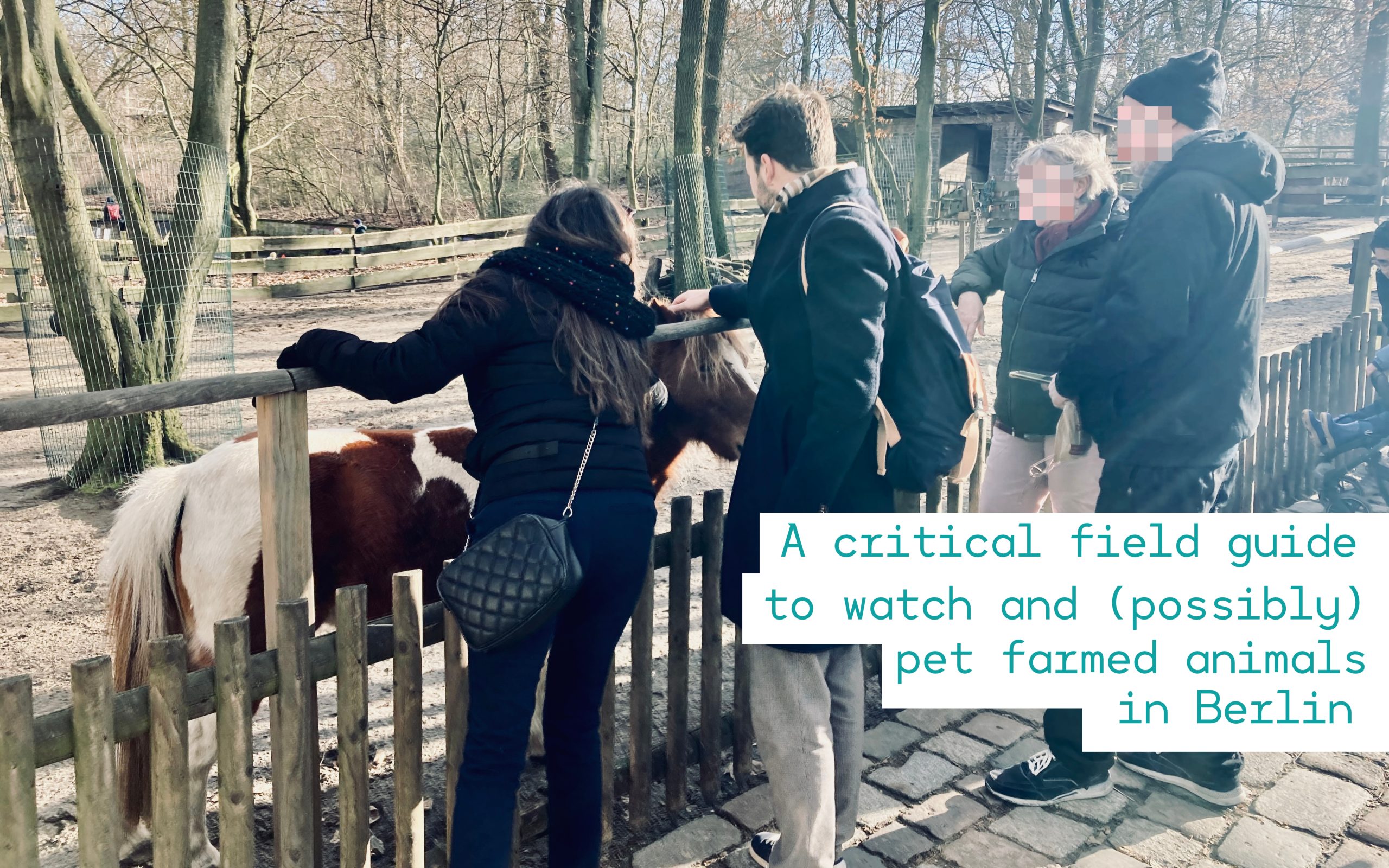▒▒▒▒▒▒▒▒▒▒▒▒▒▒▒▒▒▒▒▒▒▒▒▒▒▒▒▒▒▒▒▒▒▒▒▒▒▒▒▒▒▒▒▒▒ This number has been curated by Ignacio Farías and Léa Lacan. ▒▒▒▒▒▒▒▒▒▒▒▒▒▒▒▒▒▒▒▒▒▒▒▒▒▒▒▒▒▒▒▒▒▒▒▒▒
Cite this article: Orrego, S. 2024. “Urban animal enclosures: A critical field guide to watch and (possibly) pet farmed animals in Berlin.” Tarde 3 (Jan – Feb). DOI: 10.17605/OSF.IO/U8MPE
Conceived as an experimental exercise of empirical philosophy [1], this number of Tarde stays in Berlin to examine a type of urban location where people see and interact with mostly farm animals kept in captivity. The exercise will be essayed online and through this number’s printed version. As usual, a DIY field device component is available to download, this time proposing an ethnographic exploration of those spaces by paying particular attention to some ethical questions mainly dropped in our printed version.
- Situating Berlin’s animal enclosures
- Expanding ethical dilemmas of captivity
- Visitor survey
- Online references
- Handbook references
Situating Berlin’s animal enclosures
Its more than 2,500 parks [2] and its extensive range of public green spaces —30% of its city area [3]— give Berlin a plethora of wildlife. A short inventory of only the non-pet animals one can see around shows a wide variety of species freely inhabiting the city’s open public areas: red squirrels, rats, crows, sparrows, rabbits, bats, foxes, pigeons, raccoons, boars, falcons, and foxes. The city also has two zoological gardens, the Tierpark BerlinFriedrichsfelde and the Zoo Berlin; two aquariums, the Aquarium Berlin and the AquaDom and Sealife Berlin; approximately 2900 hectares of allotment gardens [4], and some private —but opened to the public— and public urban farms (Bauernhöfe), children farms (Kinderbauernhöfe), and petting zoos (Streichelzoos).
This number is about the last category of places: public and private open locations where people gather to watch and pet animals for free. Although we labeled those spaces as animal enclosures for practical reasons, they are a heterogeneous conglomerate of spaces, networks, bodies, administrative logics, and species. However, what those enclosures have in common is the fact they keep animals in captivity. But in most of the cases, one does not feel those animals are in captivity. There are two reasons why.
First, the spaces are nice and well-maintained. Many of those locations look like farm-like and bucolic scenarios. Ponies and donkeys are in wide pens; goats, sheep, and lamas have enough space behind bars to move around. Chickens can freely circulate in designated zones, and if an animal is really enclosed in a small cage, it is for its own safety. However, as Lori Marino states, captivity is much more than a spatial matter, “it represents a state of being” [5] composed of a vertical “directional relationship between the captor and the captive.” [6]. While the captor benefits from the captive, this one is totally dependent on the captor’s will.
Second, Berlin enclosures feature most of the animals they keep in captivity as farm animals. It means animals that belong to farms or other related human environments. Farm animals comprise a wide category of domesticated nonhuman beings often linked to human productive systems either as a workforce or simply as products. Since they are not wild or exotic creatures such as elephants, giraffes, or sharks, somehow it is normal and acceptable to keep them in places like the enclosures this number is about. At least there, one might think, in those scenarios, farm animals are not being enslaved and slaughtered.

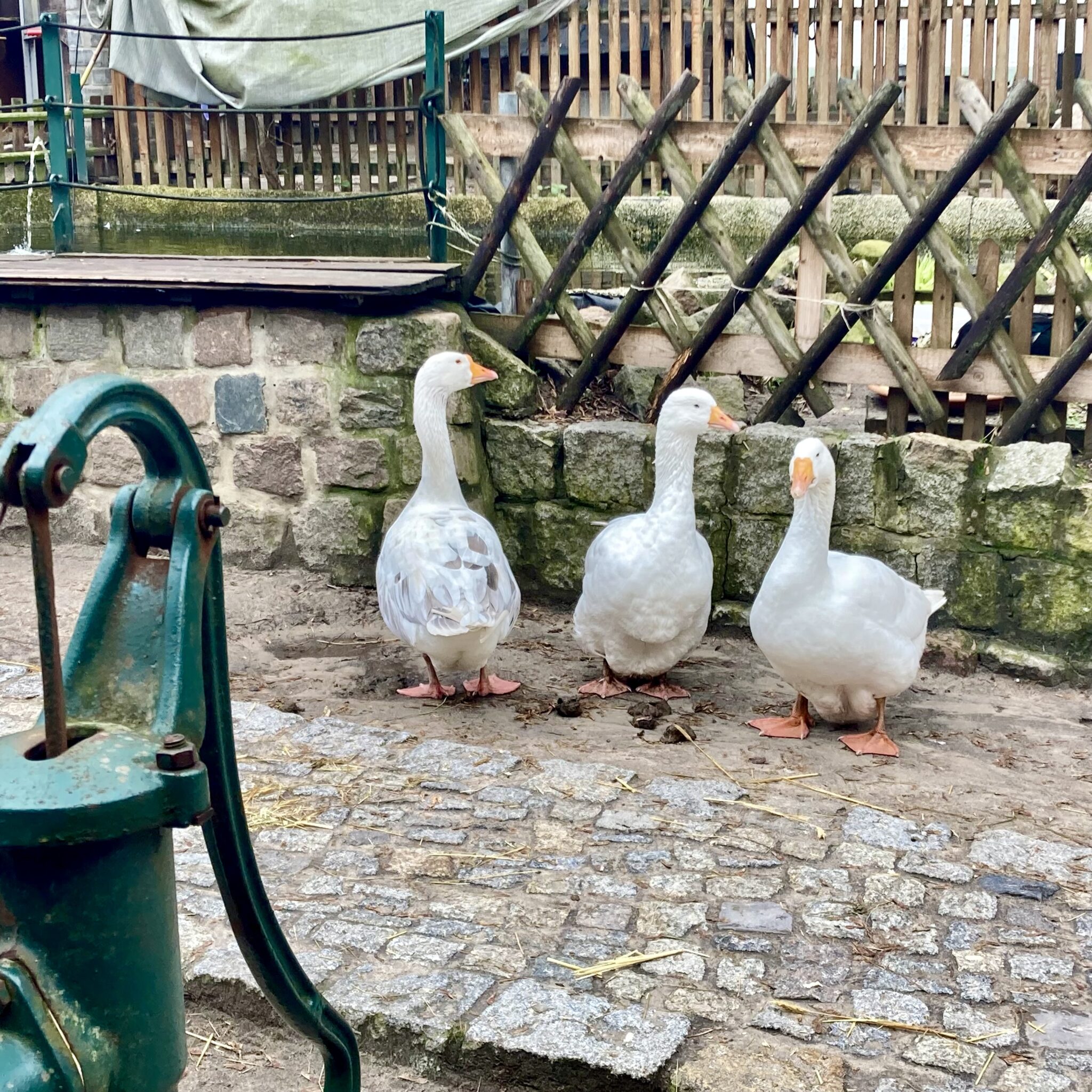
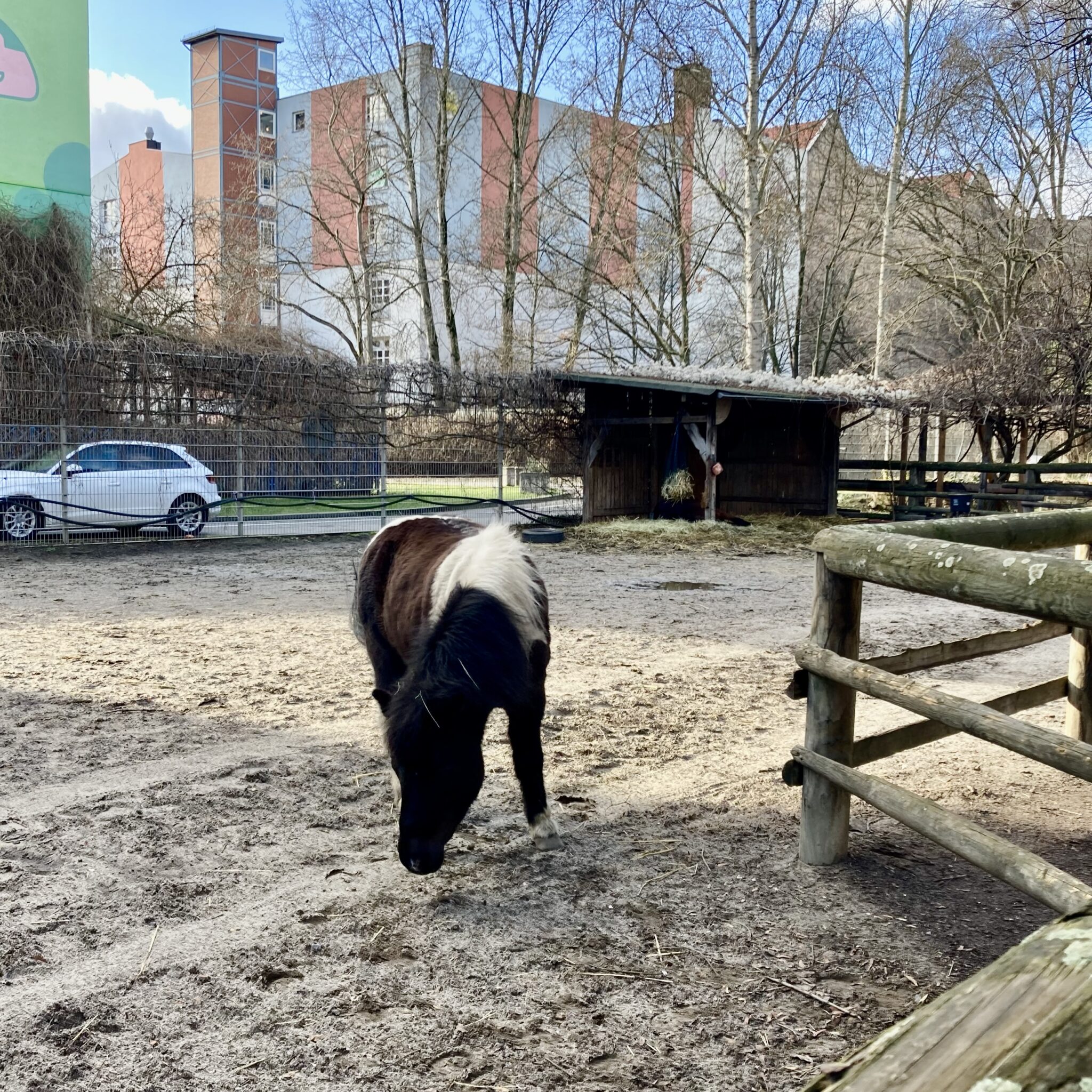
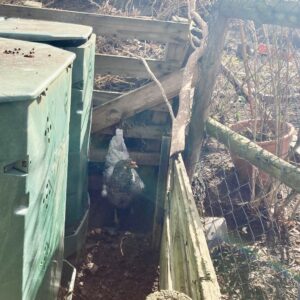
Expanding ethical dilemmas of captivity
In general terms, with some exceptions we will expand below, one can say Berlin urban animal enclosures behave similarly to sanctuaries for farm animals. Most of the animals in those locations were collected, received as donations, or rescued from spaces where they were kept captive and immersed in productive dynamics being used as raw materials and workforce. The idea with the enclosures is to provide a better environment for those animals where they can live their lives protected. However, as one of the main topics in our handbook (download it here), we have proposed some ethical dilemmas regarding the existence of this type of urban facility. Despite those dilemmas being presented as open questions, we want you to help us answer them. In the next paragraphs, we have introduced three interlaced departure points to enhance this discussion.
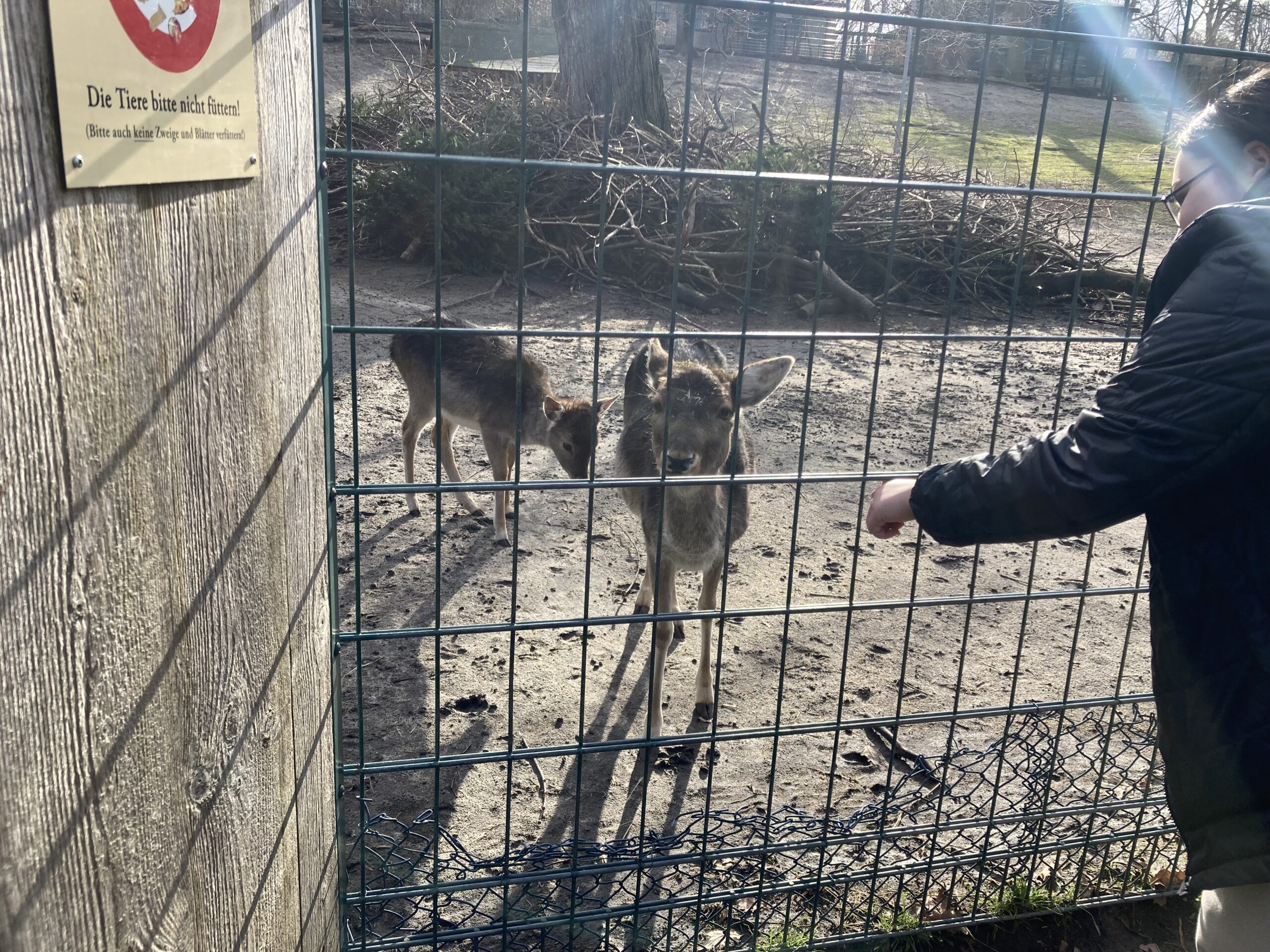
Let us start with the idea —and primary concern— that to keep animals in captivity, regardless of whether they are exploited in farms or used as entertainment or educational devices in nice urban locations, is a questionable practice based on privilege and subordination [7] where humans private some beings of their freedom to humans get some benefit or satisfaction. Animals are detached from their environments and forced to inhabit artificial environments and to be part of the human-centered logic of nature’s organization and production. Notwithstanding, the case of farm animal enclosures and farm animals themselves is a bit more complex than, for instance, the current debates on captivity in traditional zoos [8, 9].
Let us start with the idea —and main concern— that to keep animals in captivity, regardless of whether they are exploited in farms or used as entertainment or educational devices in nice urban locations, is a questionable practice based on privilege and subordination [7] where humans private some beings from their freedom in order to humans get some benefit or satisfaction. Animals are detached from their environments and forced to inhabit artificial scenarios and be part of the human-centered logic of nature organization and production. Notwithstanding, the case of farm animal enclosures and farm animals themselves are a bit more complex than, for instance, the current debates on captivity in traditional zoos [8, 9].
If we agree that keeping animals in captivity is a practice that should not exist, what would we do with the animals already inhabiting animal enclosures? Shall we send them back where they belong? And where is that place? Farms? Nature—outside of farms or human settlement zones? Of course, we would be doing nothing if we send them back to farms or to any other institution that keeps them in captivity but releasing them in nature is also a not viable option since they are domesticated and human-dependent animals.
Most current captives are the products of many generations of captive breeding, and it is unclear that humans would be able successfully to rehabilitate and introduce these captives to free living. In addition, many captive social animals form deep bonds with those with whom they share an enclosure, when they are lucky enough to have companions. Ripping them away from their captive companions and moving them to new environments may not be in their best interests. [10]
Recognizing the ethical and political implications of keeping other beings in captivity —at least, in a context of sanctuaries for formerly farm animals— Miriam Jones [11] believes those spaces are nowadays necessary “because the alternatives are unacceptable.”
We live in a world that requires the rescue of members of certain species because other members of our own species will hurt and kill them if we don’t; we do what we need to do, as ethically as possible, within the context of that reality. We also know—those of us who work with formerly farmed animals—that for most of them, survival on their own is an impossible goal.
At this point, let us say that keeping urban animal enclosures is not desirable but necessary since they give those farm-rescued or adopted beings a better place to stay. Now well, shall those animals in captivity be able to have offspring that would end up living in the same space of captivity as their ancestors? Or should humans also decide over farm animals’ reproductive patterns to avoid them giving birth to more captive beings? Those are not minor questions in the context of Berlin animal enclosures since, for instance, the Tierpark Neukölln has a wide variety of endangered farm species. Should those risky or almost extinct domesticated breeds disappear rather than being exhibited in captivity?

As a final remark, there are some spaces and practices happening in Berlin animal enclosures that are far from the idea of serving as places where animals are detached from serving as food, commodities, or workforce. For instance, in places like the Tierpark Neukölln and the Tierhof Alt-Marzahn, one can buy honey and eggs. Also, in the Tierpark Nuekölln, I witnessed how chicks were used to feed, in a sort of human-assisted natural show, their newest attraction: a group of martens. Meanwhile, one can rent animals for films and events in the Tierhof Alt-Marzahn and rent horses for transportation. In the Domäne Dahlem, which is a hub for agricultural traditions with an ecological focus, whatever it means, it is even possible to buy homemade sausages from the pigs they raise and participate in workshops about welfare husbandries.
Also, in almost all the enclosures, the animals are perceived as ambassadors [12] of nature and their own species, serving as educational elements mostly for children who are sometimes allowed to pet, ride, and play with them. It gives the impression that the ludic, didactic, and informative attributes granted to farm animals somehow justify keeping them in captivity. But what do you think?
If you are in Berlin or have an animal enclosure near you, consider downloading the DIY component of this issue and carrying out a brief ethnographic exercise to explore how those proposed dilemmas are empirically disputed and negotiated daily in those human-animal urban spaces of exchange, conviviality, and domination.
Visitor survey
This survey was conducted in the Kinderbauernhof at Görlitzer Park and the Tierpark Nuekölln at Hasenheide Park on May 28th and June 4th, 2023. Sixty people, thirty per location, and from ages 8 to 52 were interviewed. Children under 14 years were interviewed in the presence and with the authorization of their parents.
The graphics below condense the answers from the people in both locations. Click on the images to resize them. If you want to access the whole data and check the individual results, please download the Excel file by pressing the orange button.

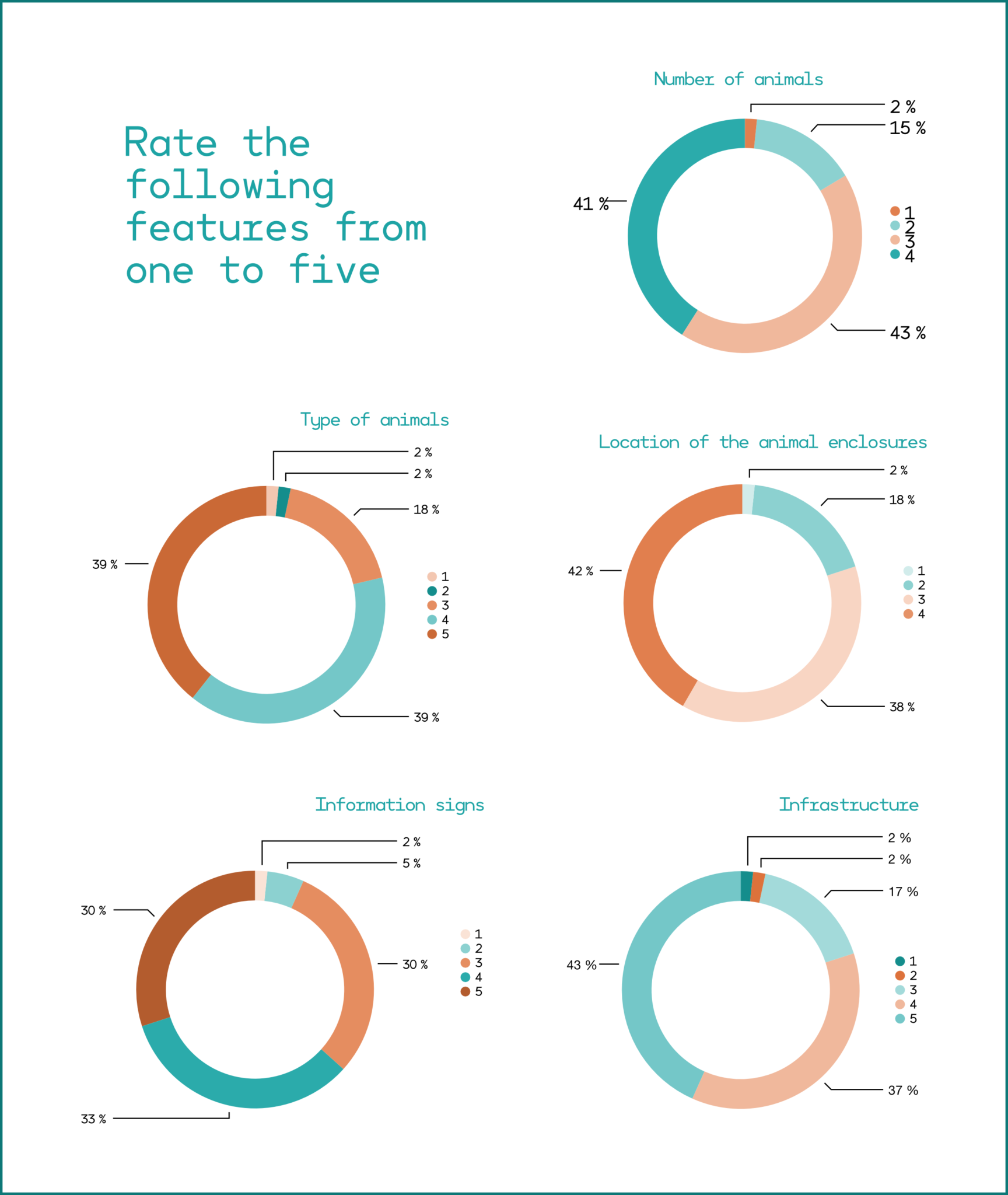

Online references
[1] Mol, A. (2021). Eating in Theory. Duke University Press.
[2] Berlin. (n.d.). Public Parks (Green and Recreation Spaces). Retrieved from: https://www.berlin.de/sen/uvk/en/nature-and-green/urban-green-space/public-parks/
[3] Kabisch, N. (2015). Urban green space distribution and accessibility in Berlin, Germany. Bulletin of People- Environmental Studies, 42, 7-14.
[4] Berlin (n.d.). Allotment Gardens. Retrieved from: https://www.berlin.de/sen/uvk/en/nature-andgreen/urban-greenspace/data-and-facts/allotment-gardens/.
[5] Marino, L. (2018). Captivity. In Gruen, L. (Ed). Critical Terms for Animal Studies, p. 119. The University of Chicago Press.
[6] Marino, L. (2018). Captivity. In Gruen, L. (Ed). Critical Terms for Animal Studies, p. 120. The University of Chicago Press.
[7] Hovorka, A. (2017). Animal geographies I: Globalizing and decolonizing. Progress in Human Geography, 41(3), 382-394.
[8] Pierce, J. and Bekoff, M. (2018). A Postzoo Future: Why Welfare Fails Animals in Zoos. Journal of Applied Animal Welfare Science, 21(1), 43-48.
[9] Braverman, I. (2013). Zooland: The institution of captivity. Stanford University Press.
[10] Marino, L. (2018). Captivity. In Gruen, L. (Ed). Critical Terms for Animal Studies, p. 135. The University of Chicago Press.
[11] Jones, M. (2014). Captivity in the Context of a Sanctuary for Formerly Farmed Animals. In Gruen, L. (Ed). The Ethics of Captivity, pp. 91-101. Oxford University Press.
[12] Spooner, S,. Farnworth, M.J.. Ward, S.J., & Whitehouse-Tedd, K. (2121). Conservation Education: Are Zoo Animals Effective Ambassadors and Is There Any Cost to Their Welfare? J. Zool. Bot. Gard, 2(1), 41-65; https://doi.org/10.3390/jzbg2010004
Handbook references
[1] Although those types of urban spaces are very popular in Berlin and some other small towns around the country, according to biologist Dirk Petzold from zoo-infos.de (*), urban animal enclosures could not be considered a national phenomenon. His guess is that those locations were the legacy of the German Democratic Republic animal parks (Heimattierpark). However, some similar locations are also spread all across the Netherlands (Kinderboerderij) and France (ferme pédagogique). (**)
(*) zoo-infos.de is perhaps the most complete online database of zoos in Germany, Austria, and Switzerland.
(**) This paragraph was written from a private conversation via email.
[2] Everett, J. (2001). Environmental Ethics, Animal Welfarism, and the Problem of Predation: A Bambi Lover’s Respect for Nature. Ethics and the Environment, 6(1), 42–67. http://www.jstor.org/stable/40339003.
[3] Jamieson, D. (1998). Animal Liberation is an Environmental Ethic. Environmental Values, 7(1), 41–57. http://www.jstor.org/stable/30302268.
[4] Campbell, I. (2018). Animal Welfare and Environmental Ethics: It’s Complicated. Ethics and the Environment, 23(1), 49–69. https://doi.org/10.2979/ethicsenviro.23.1.04.

